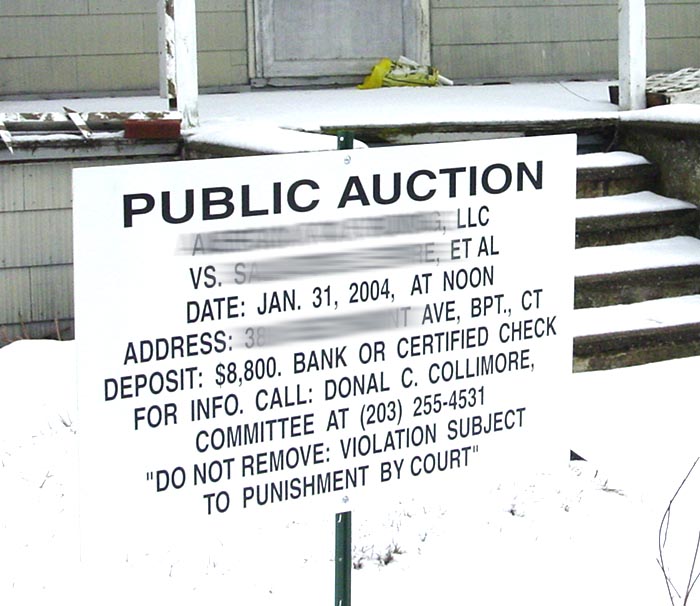Sales Concessions
By now I’m sure you’ve heard the buzz about the loads of incentives being offered from sellers these days but some buyers who buy on houses that come with free vacations, cars or other sales incentives may be surprised to find out – sometimes too late – that the places they want are not worth what they thought.
The lenders view is that the amount of “concessions” sellers are dangling in front of potential buyers have a dollar value that should be accounted for by the appraiser – if not deducted outright from the selling price – when determining the true market value of the property. If the appraiser does his work properly, the mortgage company may not be willing to lend as much as the buyer needs to make the deal work. And if that’s the case, the buyer will have to come up with some extra cash he didn’t expect he’d need, or he’ll have to walk away from the deal altogether.
Suppose, for instance, the seller or builder dangles $50,000 SUV in front of the eyes of someone looking longingly at a $500,000 house that has been finished and sitting empty for several months. The place is costing the builder money each and every month. But rather than lower the price and make his previous buyers unhappy, he decides to toss in a car to get rid of it.
If the buyer bites, the house he agrees to pay half-a-million dollars for is really worth only $450,000. And if the buyer is seeking an 80 percent loan, he’d be able to borrow only $360,000 instead of the $400,000 he thought he could. Now the transaction is $40,000 short, and the difference has to come out of the buyer’s pocket. If the appraiser is aware of the concession, he’ll make the adjustment accordingly. But if he somehow misses the incentive, the lender ends up “mispricing” the loan for the risk involved. That’s the last thing any lender wants. And it seems it happens all the time. Every day, thousands of loans come in with sales concessions that change the loan-to-value ratios of the underlying properties, although each one results in just a little loss, it’s a little loss thousands of times over.
That’s why lenders are reminding appraisers to keep a keen eye out for cars, boats, trips and other come-ons. But mispricing is only the tip of the proverbial iceberg where sales concessions are concerned. In reality, they upset the apple cart all the way up and down the housing food chain. And lenders are far from the only losers: If the house isn’t as valuable as the buyer or lender believes and the buyer finds himself in financial difficulty, he could end up being “underwater or upside down”; that is, owing more than the place is currently worth on the open market.
In the above example, say the buyer lost his job shortly after moving in and is forced to sell because he can’t make the payments. The balance on his $400,000 loan is still pretty near the original amount, but because the SUV isn’t part of the house, the place is now worth only $450,000. In this case, the buyer is still $50,000 in the black. And even calculating for sales costs, he should come out ahead. But what if the buyer took a 95 percent loan? In that case, he’d owe $475,000 on a house worth only $450,000.
Properties that are overvalued because sales incentives are not part of the calculation end up paying higher property taxes than they otherwise should. Exactly how much the buyer overpays depends on how his city, town or county calculates the levy(for Miami Dade go to http://www.miamidade.gov/proptax/). But it isn’t just a one-time occurrence. He overpays each and every year. Overvalued properties become false readings on which future valuations of other properties are based, thereby continuing the cycle.
In other words, inflated sales transactions become tomorrow’s ‘comps,’ meaning the next person who buys a house in the same neighborhood (and the next person after that) will end up paying more than they should. Concessions may influence the transaction but should never influence the valuation. Lenders, buyers, sellers, entire communities depend upon an appraisers’ certification of value. Of course, not every giveaway means the house is less valuable. Those things are part of the house and remain with it as “fixtures” when the place is resold – upgraded kitchen cabinets, for example, a finished basement or a complimentary two-car garage – actually add value. But items that can be removed when the place is resold – the model home furniture, for instance – or were never part of the house in the first place (think car leases, trips to Hawaii, prepaid homeowner-association dues) add no value whatsoever.
It is not unusual for builders – and even some sellers of existing homes – to offer sales incentives in a down market. And the range of the giveaways is limited only by the seller’s imagination. In September, three out of every four builders were offering some sort of stimulus, according to the National Association of Home Builders. For the most part, they were offering options and upgrades like landscaping and granite countertops. But some were offering all-expenses-paid holiday trips, spa memberships, new cars and the always reliable help with financing and closing costs. But some sellers are fraudulently jacking up their prices and then returning the difference in cash to their buyers at closing. That is, they are selling a $200,000 house for $220,000 and handing the excess $20,000 to the buyer at closing. Those kinds of shenanigans could land both the buyer and seller in hot water. A very big no no!
According to the Uniform Residential Appraisal Report that most housing valuation experts are required to use, market value is defined as “the most probable price which a property should bring in a competitive and open market under all conditions requisite to a fair sale, the buyer and seller, each acting prudently, knowledgeably and assuming the price is not affected by undue stimulus.” The price, the form commands, should represent the “normal considerations … unaffected by special or creative financing or sales concessions granted by anyone associated with the sale.” It is incumbent upon the appraiser to read the sales contract and be familiar enough with what’s going on in the marketplace with regard to concessions to make the proper adjustments in his valuation.
If he inadvertently misses some things, he won’t be getting many more assignments. If he overlooks them, it borders on fraud. And if any party to the transaction puts pressure on him or otherwise tries to coerce the appraiser into looking the other way, they become a party to an illegal act. Providing an accurate valuation is always difficult in a changing market, and the use of non-real property sales incentives adds to the challenge, The question appraisers have to ask is, Is this condo really worth $500,000, or is it worth $550,000 because it comes with a new car in the driveway?’ An important step in uncovering sales incentives, whether they’re more typical ones like seller-paid closing costs or more creative ones like cars, furniture or trips, is reviewing the purchase contract. But even if the contract agreement is not provided, an appraiser is still expected to utilize reasonable due diligence to discover sales incentives involved.
If the appraiser is unable to view the purchase agreement, for any reason, good practice would oblige the appraiser (to alert the lender by noting) that in his report.
I’ll soon be talking about The Mortgage Fraud buzz. (Real estate fraud usually takes at least two to tango-appraisers and mortgage brokers, and I hate to include realtors but they are not exempt from this wrath of temptation). Yes, we are the honored recipients of being nominated the highest ranked state mired by mortgage fraud. The true colors will show in the amount of foreclosures that are ramping up. Stay posted for more.





No comments:
Post a Comment